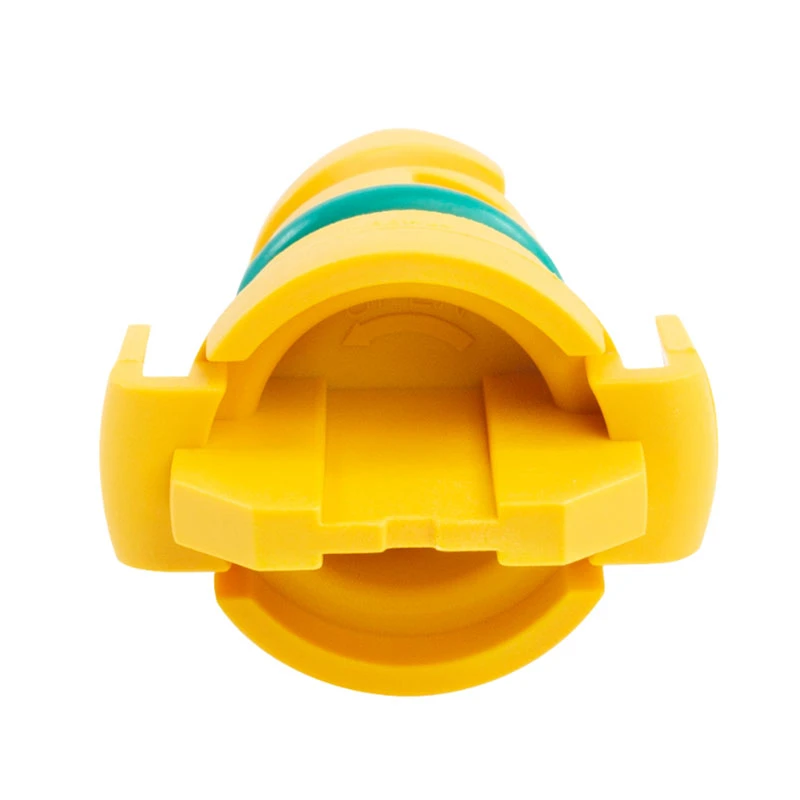Durable Plastic Oil Drain Plug for Efficient Engine Maintenance and Leak Prevention
Understanding the Plastic Oil Drain Plug Key Benefits and Considerations
In the world of automotive maintenance, even the smallest components can make a significant impact on the efficiency and safety of your vehicle. One such component that has garnered attention is the plastic oil drain plug. Traditionally, oil drain plugs have been made of metal, often steel or aluminum. However, the shift towards plastic materials is indicative of a broader trend in automotive design aimed at improving functionality, reducing weight, and enhancing overall vehicle performance. In this article, we will explore the concept of plastic oil drain plugs, their benefits, and considerations for implementation.
The Function of an Oil Drain Plug
Before delving into the specifics of plastic oil drain plugs, it is essential to understand the role of an oil drain plug within a vehicle. Located at the lowest point of the oil sump, the oil drain plug is a crucial component for facilitating the drainage of motor oil during an oil change. It seals the oil sump when closed, preventing oil leaks and maintaining optimum oil levels in the engine. The plug must withstand the pressures and temperatures of the engine environment while ensuring reliable performance.
Benefits of Plastic Oil Drain Plugs
1. Weight Reduction One of the most significant advantages of using plastic for oil drain plugs is the reduction in weight. Every gram saved contributes to the overall efficiency of the vehicle. Lighter vehicles can experience improved fuel efficiency and better handling, making plastic drain plugs an appealing option for manufacturers aiming to optimize performance.
2. Corrosion Resistance Plastic is inherently resistant to corrosion, a common issue faced by metal components exposed to harsh oil and environmental conditions. Over time, metal drain plugs can corrode, leading to leaks and the potential for oil loss. Plastic drain plugs eliminate this risk, ensuring longevity and reliability throughout their lifespan.
3. Ease of Installation The design of plastic oil drain plugs often allows for easier installation and removal. Many come with integrated features that facilitate a better grip or even include built-in seals to reduce the risk of cross-threading during installation. This can save time and effort during routine maintenance.
4. Cost-Effectiveness While initial manufacturing costs for plastic components might be comparable to metal, the overall expense can be lower in the long run. The durability of plastic drain plugs leads to fewer replacements and repair costs due to corrosion or wear and tear.
5. Environmental Impact With increasing emphasis on sustainability in the automotive industry, plastic offers an opportunity for recyclability. Many modern plastics can be recycled, reducing the environmental footprint associated with manufacturing and disposal.
plastic oil drain plug

Considerations for Plastic Oil Drain Plugs
Despite their many advantages, there are considerations and potential drawbacks associated with plastic oil drain plugs.
1. Thermal Resistance While modern plastics can withstand high temperatures, they may not have the same thermal tolerance as metal counterparts. Vehicle manufacturers need to ensure that the chosen plastic can handle the heat generated by the engine without deforming or failing.
2. Mechanical Strength Durability in high-pressure oil environments is crucial. While plastic technology has significantly advanced, ensuring sufficient mechanical strength for plastic drain plugs is essential to prevent cracking and leaks.
3. Market Acceptance Transitioning from traditional metal drain plugs to plastic alternatives may require time for market acceptance. Mechanics and automotive professionals may need to adjust their perspectives and work practices to accommodate these new materials.
4. Compatibility with Engine Designs Not all vehicle architectures may accommodate plastic drain plugs effectively. Manufacturers need to ensure that their designs consider the specific requirements and configurations of different engines.
Conclusion
The advent of plastic oil drain plugs marks a significant step toward innovation in automotive maintenance. With benefits like weight reduction, corrosion resistance, ease of installation, cost-effectiveness, and environmental considerations, plastic drain plugs offer compelling advantages over traditional metal versions. However, manufacturers and users must remain mindful of potential thermal and mechanical limitations while working towards the broader acceptance of these advanced components.
As the automotive industry continues to evolve, staying informed about such innovations can empower vehicle owners and mechanics alike to make better choices for maintenance and performance enhancement. The plastic oil drain plug might just be a small piece of the puzzle, but it reflects a larger trend towards efficiency, sustainability, and innovation in vehicle design.
-
Understanding the Front Main Engine Seal: Purpose, Maintenance, and Installation
News Jul.29,2025
-
Understanding O-Rings and Seal Rings: Types, Applications, and Custom Solutions
News Jul.29,2025
-
Understanding Crankshaft Oil Seals: Rear Seals, Pulley Seals, and Their Role in Engine Integrity
News Jul.29,2025
-
The Importance of Front and Rear Crankshaft Seals in Engine Performance and Oil Management
News Jul.29,2025
-
Crank Oil Seals: Functions, Types, and Cost Considerations in Engine Maintenance
News Jul.29,2025
-
A Comprehensive Guide to O-Rings and Seals: Types, Materials, and Global Applications
News Jul.29,2025
-
Mastering Diesel and Performance Engine Maintenance: A Guide to Critical Oil Gaskets
News Jul.28,2025
Products categories















